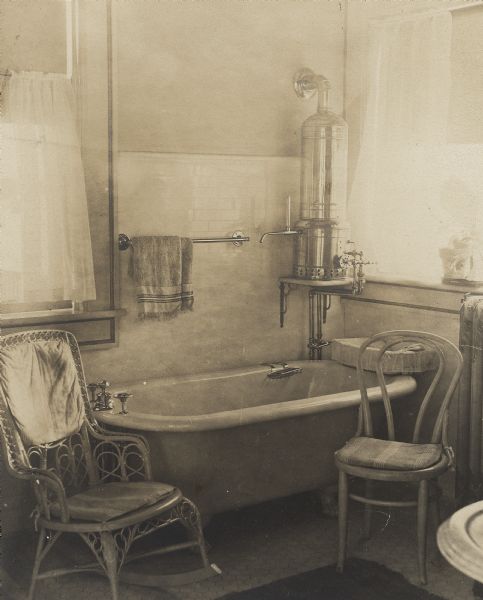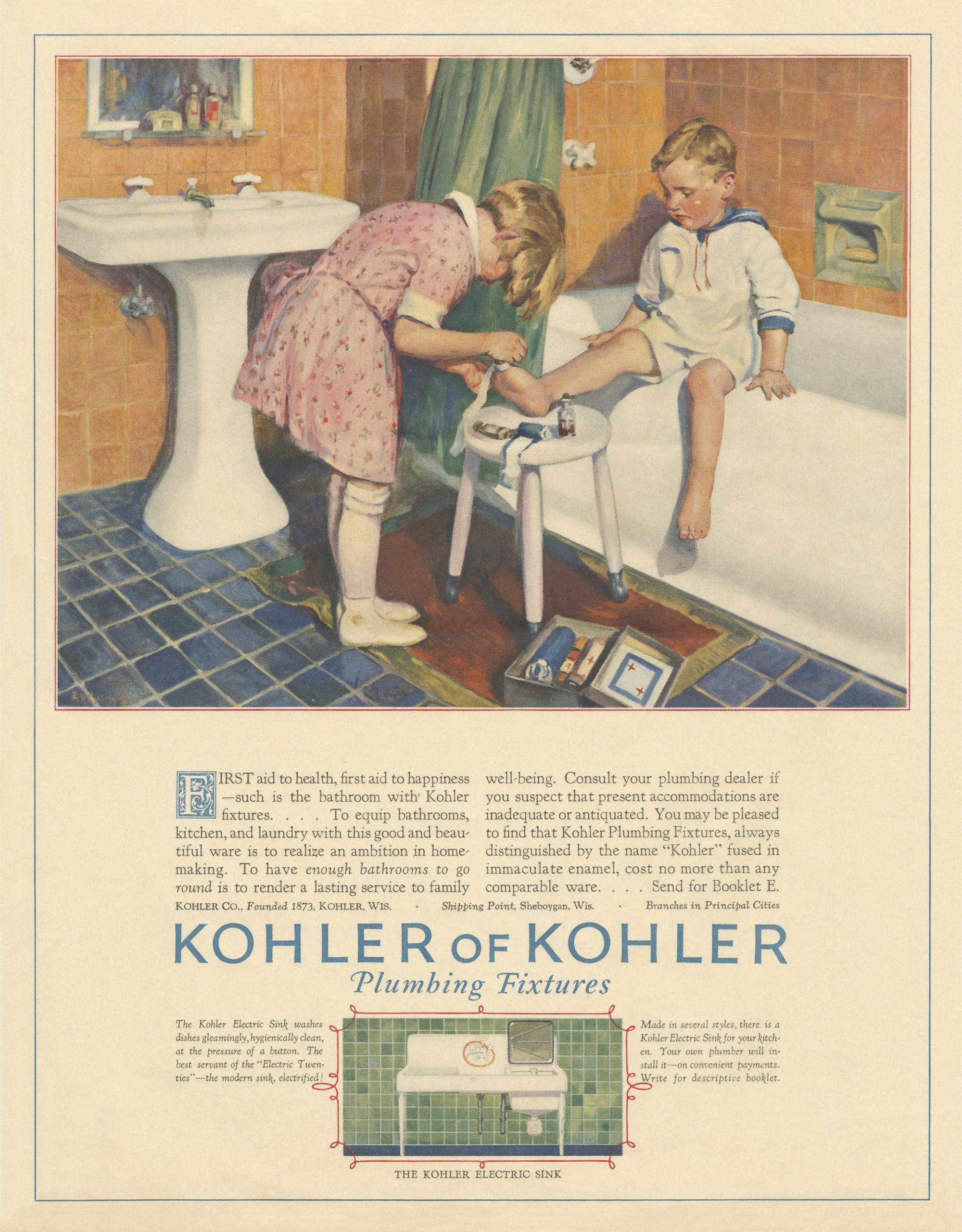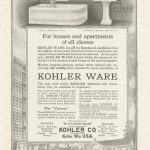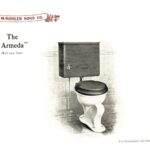
When we think of a “bathroom,” we usually imagine a room containing three standard fixtures—a bathtub, a sink, and a toilet. Bathrooms such as these are so universal in homes today that we can hardly imagine a time when they did not exist. But in fact, bathrooms as we know them are comparatively recent in origin and began appearing in American middle-class homes in large numbers only during the last third of the 1800s.
Prior to the 1800s, most people washed and bathed only occasionally. To that end, washbasins and tubs could be set up anywhere in the house and water brought to them. Although, of course, bathing happened most conveniently near where the water could be heated on a stove, namely in the kitchen. Meanwhile, the elimination and removal of body wastes happened in many different ways – by means of chamber pots, outdoor outhouses, even in water closets that used water to flush the wastes away from the house. As might be obvious, a lack of consistency was the main theme in all these arrangements.
When cities began to experience explosive population growth in the later 1700s and early 1800s, first in Great Britain and western Europe and then in North America, the disadvantages of this system soon became apparent. Rivers and other waterways that flowed through cities soon became choked with human and animal wastes, which made obtaining clean water increasingly difficult and expensive. Even more serious was the appearance of cholera in the 1830s, a disease that featured severe bouts of diarrhea and killed its victims by extreme dehydration. Cholera and other epidemic diseases provided vivid evidence of the dangers presented by the new urban environments.
By the 1850s the spread of cholera had been linked to water polluted by human wastes. Controlling cholera and other diseases that were commonly linked with filth presented governments with two problems. The first was how to make clean water available to everyone, and not just wealthy residents who could afford to buy estates that lay upriver from where most pollutants entered the water supply. The second problem consisted of how to safely remove human wastes from homes and carry them away from the city. The answers to these problems came with the installation of extensive water pipes and sewer systems. These expensive government investments dramatically changed the quality of urban life.
In effect, the provision of pipes carrying clean water into houses and wastes away from them gave rise to the modern bathroom. Both due to efficiency of design and because of widespread concern about the possible disease-causing effects of “sewer gas,” it made sense to gather the pipes carrying water away from the house into a single bundle to which an S-shaped trap could be added that would inhibit the entry of sewer gas. New York and Washington, D.C., adopted the first plumbing codes in the United States in 1882, and other cities rapidly followed them. In 1888, for example, a new building code passed in Baltimore required all new homes of four or more rooms to have a bathroom.
 The evolution of bathrooms as a specific space in homes offered Kohler Company and its competitors a new market, one that was growing at a spectacular rate, thanks to the boom in the construction of single-family homes in American cities and suburbs. By the early 20th century, Kohler’s ads described the bathroom as the ultimate symbol of modern comfort and affluence. As seen in these illustrations, children soon began to occupy a central role in these ads, which displayed the bathroom at the very heart of family life.
The evolution of bathrooms as a specific space in homes offered Kohler Company and its competitors a new market, one that was growing at a spectacular rate, thanks to the boom in the construction of single-family homes in American cities and suburbs. By the early 20th century, Kohler’s ads described the bathroom as the ultimate symbol of modern comfort and affluence. As seen in these illustrations, children soon began to occupy a central role in these ads, which displayed the bathroom at the very heart of family life.
Written by Thomas Broman, November 2020.
SOURCE
Alison K. Hoagland, The Bathroom: A Social History of Cleanliness and the Body (2018).



